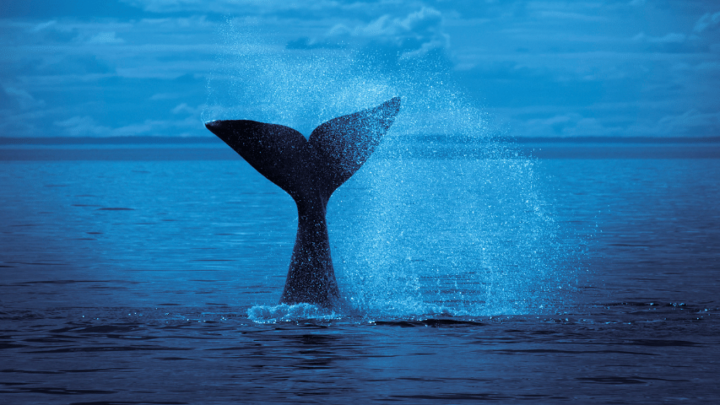Did you know some whale species are among the longest-living mammals? They are also among the largest mammals on earth,
even though a popular type, the humpback whales, don’t even eat for most of the year? Whales are surely interesting animals.
Fully marine animals, the whales form a significant part of the Cetacea group, along with porpoises and dolphins.
They weigh over 4 tons (4000 kgs) and measure around 30 meters (1200 inches). Whales are purely placental mammals that often live for over 50 years.
How Fast do Whales Swim?
Whales are some of the fastest aquatic animals in this world. They can attain speeds greater than 20 miles mph (32 km per hour) over long periods. But, in tremendously short bursts, some species’ speed changes to 30 mph (48 km per hour).

How Fast Do Whales Swim?
Different Whale Species and Their Speeds
Various whale species travel or swim at various speeds. Let’s look into brief details of each whale species:
1. Blue Whale
The Blue whale, a part of the baleen whale group, is the biggest animal we have on earth.
Reaching a maximum length of 29.9 meters (1177 inches) and weight of 199 metric tons (199900 kgs),
blue whales are typically different shades of grey and blue.
They travel at an approximate speed of 31 miles per hour (50 km per hour) in short bursts and when with fellow congeners.
However, the speed reduces to 12.4 miles per hour (20 km per hour) when whales are traveling alone in the ocean.
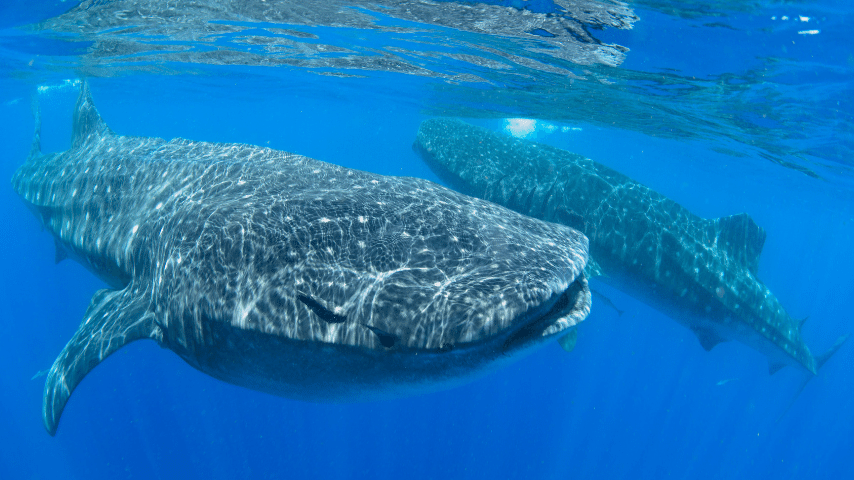
Blue Whale Travel At Approximate Speed Of 31 Mi/hr (50 Km/hr)
2. Humpback Whale
The Humpback whale is again a member of the baleen whale group and the Balaenopteridae family.
It is a rorqual measuring up to 17 m (670 inches) and weighing over 40 metric tons (36287 kgs).
It has a distinctive body with pectoral fins that are long and a knobby head.
A highly acrobatic creature, the Humpback whale can reach a speed of about 16 miles per hour (25.7 km per hour), especially when breaching.
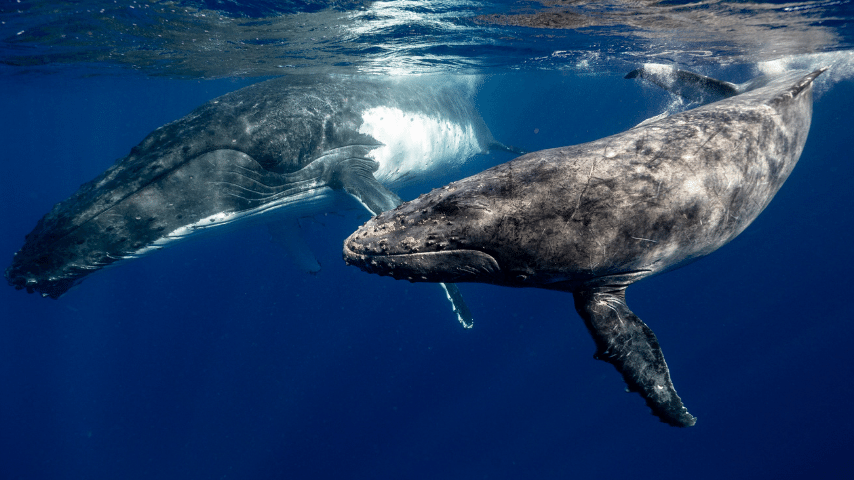
Humpback Whale Can Reach A Speed Of About 16 Mi/hr (25.7 Km/hr)
3. Sei Whale
It is the third-largest rorqual after the fin whale and the blue whale. This baleen whale inhabits several oceans and adjoining seas, preferring deep waters.
The Sei whale is another whale species that’s considered the fastest of its kind. It can travel up to 31-40 miles per hour (50-65 km per hour) over small distances.
You are least likely to find it in semi-enclosed water bodies and tropical waters.
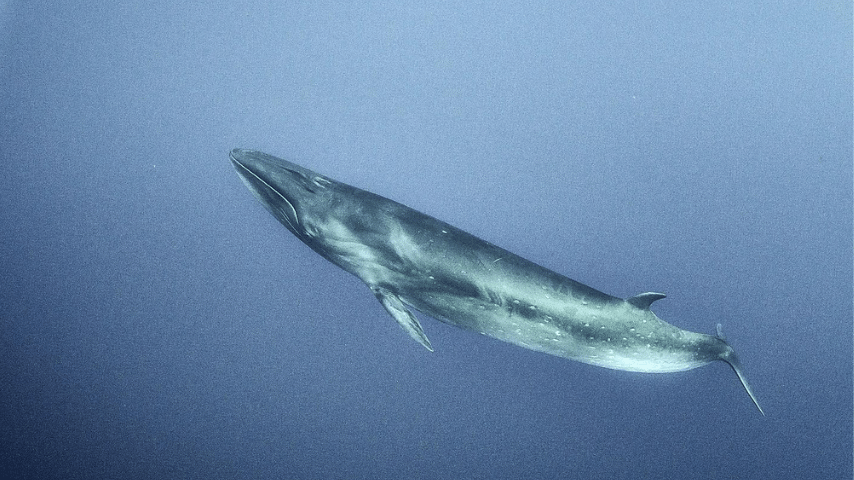
Sei Whale Can Travel Up To 31-40 Mi/hr (50-65 Km/hr) Photo Credit @fredbuyle on Instagram!
4. Fin Whale
The second-largest whale species is the Fin whale, which scientists consider the ‘’greyhound of the sea’’.
It was formerly known as razorback whale and herring whale and scientifically called Balaenoptera physalus.
As American naturalist Roy Chapman Andrews said, the fin whale can quickly reach a speed of about 24.8 miles per hour (40 km per hour),
enough to surpass the ocean’s fastest steamship. The entire world houses only around 100,000 Fin whales.
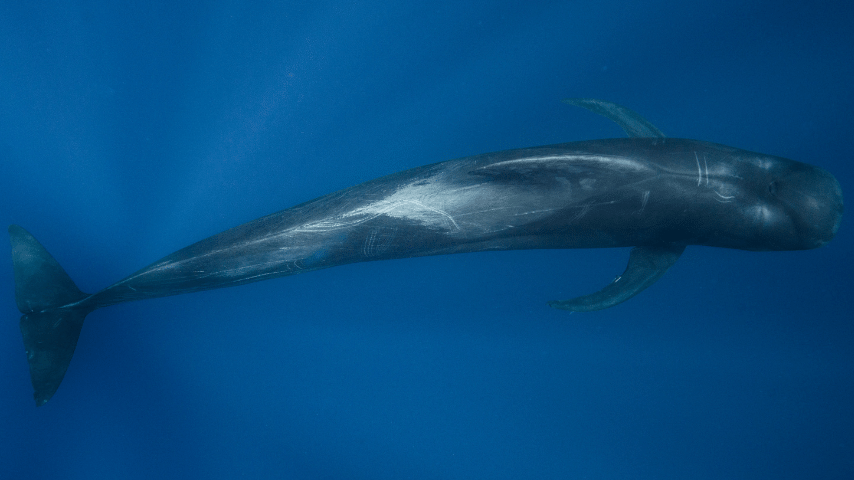
Fin Whale Can Quickly Reach A Speed Of About 24.8 Mi/hr (40 Km/hr)
5. Sperm Whale
The Cachalot is the Sperm whale, the biggest toothed whale, and toothed predator.
It is the only member alive from the Physeter genus and one of the Sperm whale family’s three extant species.
The Sperm whale can reach cruising speeds of 3-9.3 miles per hour (5-15 km per hour).
However, it can also reach 21.7 -27.9 miles per hour (35-45 km per hour) and maintain it for over an hour, mostly when diving into dark depths to hunt squids.
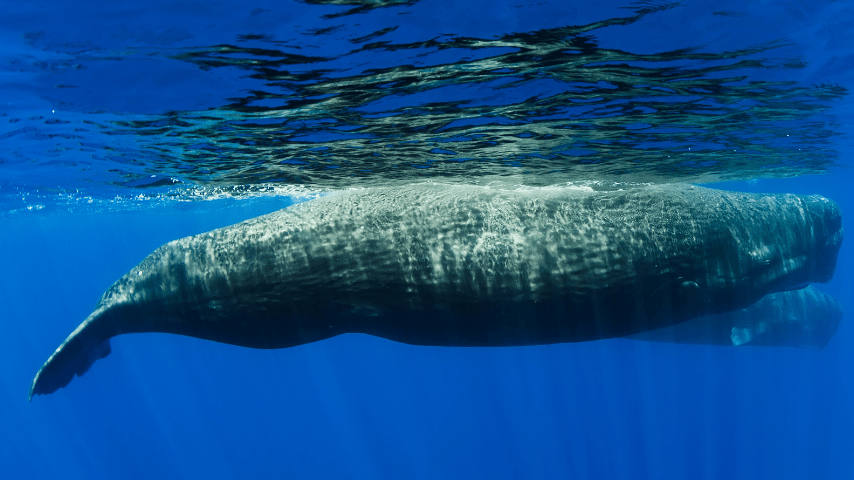
Sperm Whale Can Reach Cruising Speeds Of 3-9.3 Mi/hr (5-15 Km/hr)
6. Killer Whale
The Killer whale belongs to the oceanic dolphin family. It is a toothed whale recognizable by the unique pattern of its body, which is black and white.
Scientifically known as Orcinus orca, it weighs about 3.3 to 4.4 tons (3000 to 4000 kgs).
Among the fastest marine animals, the Killer whale is also commonly referred to as the orca.
It can reach a speed of 45 km per hour (28 miles per hour) over small distances.
However, its swimming speed drops to less than 8 miles per hour (13 km per hour).
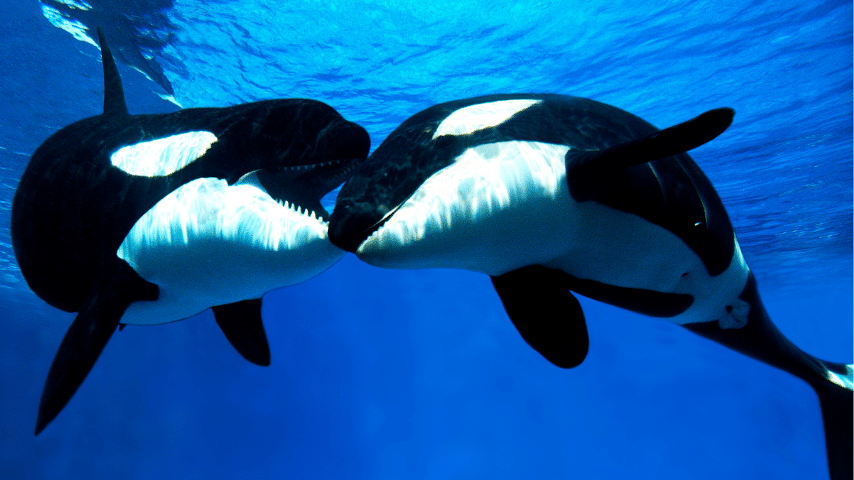
Killer Whale Can Reach A Speed Of 28 Mi/hr (45 Km/hr)
Porpoising and its Importance for Whales
Whales have streamlined bodies that allow them to move in accordance with the water waves.
They can increase, decrease, and maintain different speeds for different periods.
Whales often save energy and cruise for longer using the porpoising technique.
It means that the whales swim close to the water surface and maintain an up-and-down motion, similar to a wave.
Whales can easily reach a speed of over 20 miles per hour (32 km per hour) when in groups or swimming purposeless.
However, they can go much higher or even twice this value when traveling solo or migrating.
Fastest Baleen Whales How Fast do Whales Swim?
Baleen whales are aquatic creatures with oral whalebone plates for plankton straining from the water.
These prominently include the humpback whale, rorqual, grey whale, and right whale. The fastest among the baleen whales are the following:
1. Fin Whale
The popular Fin whale is amongst the fastest baleen whales, with an appearance akin to a torpedo.
The Fin whale has smooth skin with a flat head, unlike humpback whales.
Its tail fin has highly durable muscles that largely contribute to its great swimming speeds.
The muscles also help the Fin whale pull up, push down, and create constant propulsion from the back.
The Fin whale can maintain a speed of 25 miles per hour (40 km per hour) and sometimes even 29 miles per hour (46.4 km per hour) in bursts.
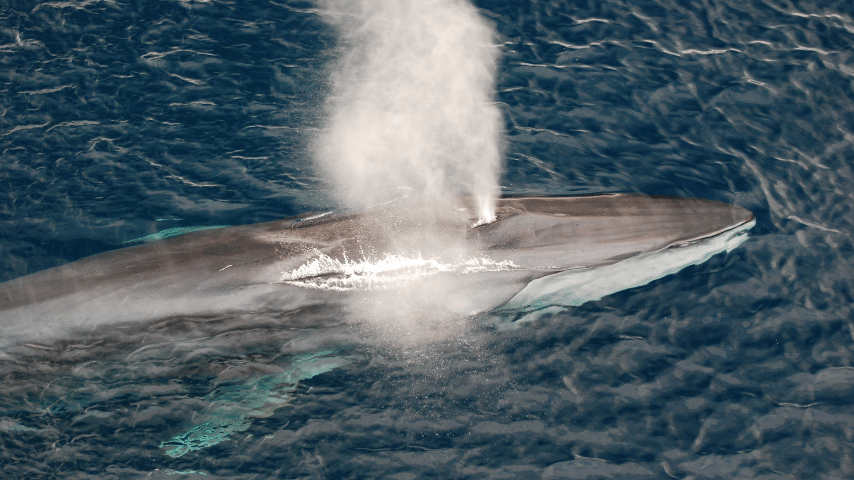
Fin Whale Burst Speed Is About 29 Mi/hr (46.4 Km/hr)
2. Blue Whale
As the biggest animal on earth, the Blue Whale reaches a length of about 30.5 meters (1200 inches).
They can maintain speeds similar to Fin whales; however, their burst speed is around 28 miles per hour (45 km per hour).
Blue whales are known to sieve the oceans for tiny krill, with a feeding speed of 5-10 miles per hour (8-16 km per hour).
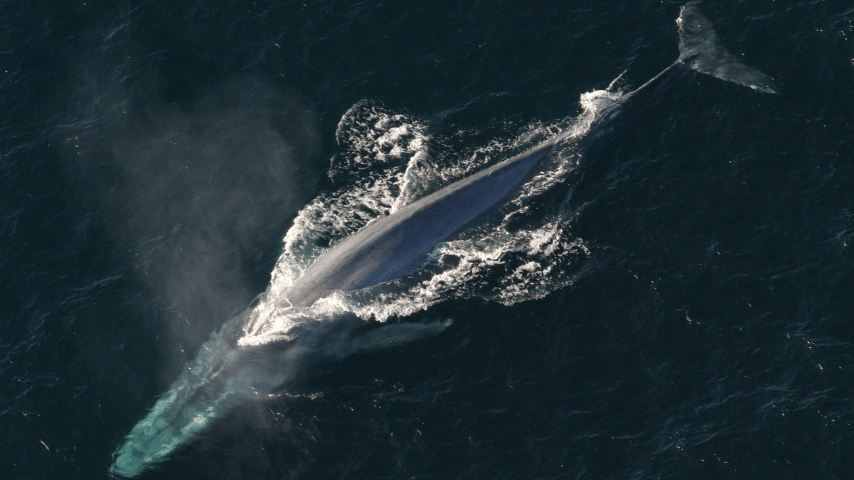
Blue Whale Burst Speed Is Around 28 Mi/hr (45 Km/hr)
3. Sei Whale
The mighty Sei whale is among the fastest aquatic creatures, growing to about 12 to 18 m (472-708 inches).
It can also maintain a speed of 25 miles per hour (40 km per hour) and a top speed of 31 miles per hour (50 km per hour).
They often migrate over the same routes in summer and winter, covering long distances.
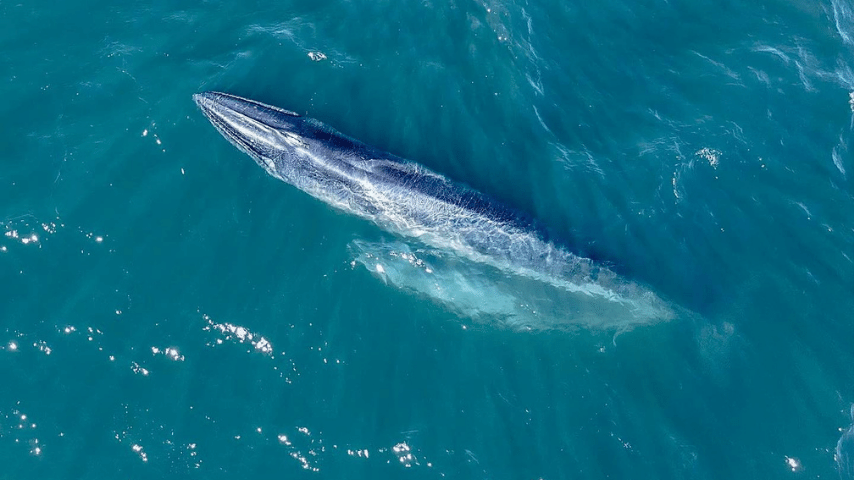
Sei Whale Can Have A Top Speed Of 31 Mi/hr (50 Km/hr) Photo Credit @diegoa.cabanas on Instagram!
Frequently Asked Questions About How Fast Whales Swim
Which whale moves the fastest?
Various whale species move at different speeds, depending on the duration, water depth, and if traveling solo or in groups. However, the Fin whale is known to travel the fastest, with an average speed of 25 miles per hour (40 km per hour) and a top speed of 29 miles per hour (46.4 km per hour).
How do whales move at such fast speeds?
The whale’s natural body shapes and a phenomenon known as porpoising. Porpoising allows whales to swim close to the water surface and move with the currents, the latter saving them energy and giving them a significant push from behind.
What is the average speed of a whale?
The average speed is 20 mph (32 km per hour) over long periods. However, the speeds vary between species and certain other factors.
Conclusion
To sum it up, whales’ speeds depend on their species, water depth, duration of travel, and if they are traveling solitary or in groups.
Individual whales move faster than those in large pods. Similarly, whales migrating far distances cruise slower than their maximum speed to save energy for tough tides.

